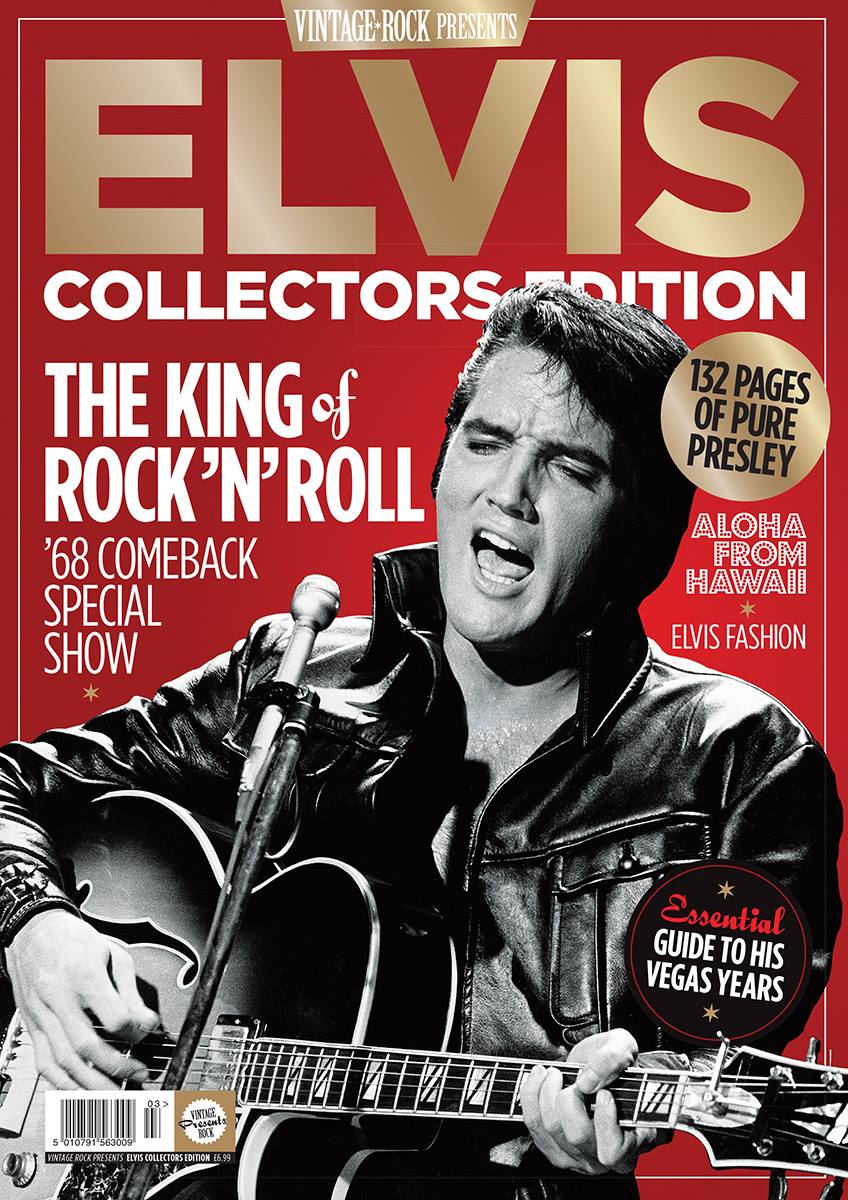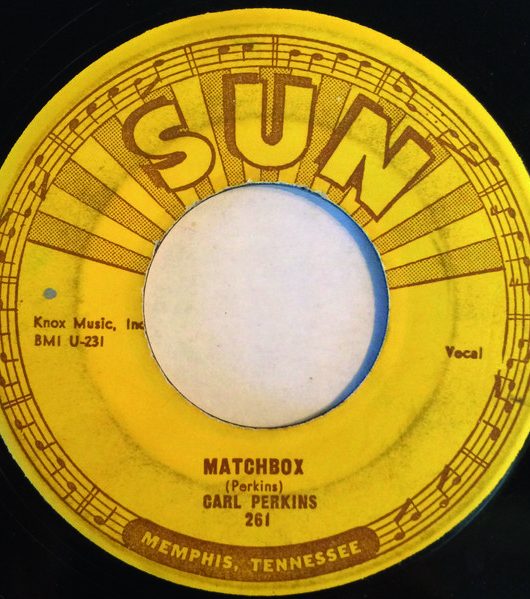Guaranteed to break up the house with his frantic blowing, Big Jay McNeely reigned as ‘King Of The Honkers’ for 70 years and was still wowing audiences in his late 80s…
It’s ironic that rock, once the electric guitar had established its hegemony from the mid-1950s, reduced the status of saxophones in commercial music. There was a time when these horns, relatively simple to play and hold big, sustained notes on, were the go-to instruments for injecting a bit of edge and upping excitement levels. Even before their R&B heyday, saxophonists, whether playing alto, tenor or baritone, were making thrilling contributions to the big band sounds of the 1930s and 1940s.
However, when the featured sax players in these orchestras took solos, the swing arrangements tended to keep the lid shut on excessive showboating. More exhibitionist saxophonists really came into their own with the arrival of the smaller combos at the end of the 1940s.
Still steeped in jazz, these players, instead of following bebop trends which allowed musicians more space to express themselves, stripped their playing down to its essentials, almost to the point of unmusicality. Varied note playing was ditched in pursuit of volume and thrills. They found that wailing effects, coupled with crowd-pleasing physical antics, won them new audiences beyond the jazz hardcore.
In Arnold Shaw’s Honkers And Shouters: The Golden Years Of Rhythm And Blues, the author makes the distinction between the “screaming” tenor sax solo, as heard on Hal Singer’s 1948 R&B chart hit Corn Bread, and the “honking” sound. To be honest, you’d be hard pressed to spot much difference a lot of the time, but honking, as defined by Shaw, involves the repeated playing of low notes, and the throwing in of very high, screeching notes, sustained for long periods.
Prostrate Powerhouse
The distinguished jazz critic Leonard Feather described these new-style honkers as “audience getters.” Shaw quotes a passage by Feather explaining how these players had found that “by resorting to such tactics as the use of freak high notes, the relentless honking on a single note for an entire chorus, and the use of low notes with deliberately vulgar tonal effects, they have been able to achieve great popular success, either at the rowdier jazz events or in the circles variously known as rhythm and blues or rock’n’roll.”
In the late 1940s Shaw and some friends visited a club on Harlem’s Seventh Avenue. Entering a smoke-filled room, they heard a loud tenor sax, the player just honking the same note repeatedly, with no particular rhythm, before switching to a screeching high note, held for what seemed like an interminable amount of time. “What confused us as we began to see through the curtain of smoke was that there was no sax player visible on the small bandstand,” wrote Shaw. “But then we discovered, not without amazement, that the saxist was lying on his back and kicking his feet in the air as he ‘played’, like a small child who was having a tantum.”
Too far back in his past for him to be certain, Shaw then pondered if the prostrate player could have been Big Jay McNeely. It’s quite possible. Norm N. Nite in his Rock On: The Illustrated Encyclopedia Of Rock’n’Roll, Volume One (The Solid Gold Years) describes how when the powerhouse McNeely walked on stage: “All the house lights would be extinguished and then Big Jay’s band would begin to [perform], fluorescent lights reflecting off their shirts, while Jay lay down on stage and played.”
Celebrated Saxman
Illinois Jacquet was the unofficial founder of the honking school, thanks to his wailing tenor solo for Lionel Hampton’s orchestra on Flying Home in the early 40s, which inspired of a flood of imitators.
But once McNeely got up some steam later in the decade, the press latched onto him as ‘The King of the Honkers’. Joel Whitburn’s Top Pop Singles 1955-2006 names McNeely as the “originator of the acrobatic, wild honking sax style”. Certainly, his earthy, crowd-pleasing approach was such that an obituary in the Los Angeles Times on his death in 2018 described him as having “helped turn R&B into rock’n’roll”.
Yet McNeely started off with serious jazz intentions. Born in the Los Angeles suburb of Watts in 1927, he formed a band when still at school, naming it The Earls of ’44, a reference to the bop pioneer pianist Earl Hines, whose big band was flying high at the time. Although initially playing alto sax, it was the meatier sound of the tenor sax that really grabbed McNeely.
He claimed the histrionics only came by chance. Playing in a club one evening in the late 1940s, and frustrated at the lack of audience connection, McNeely, dressed in a suit, began playing on his knees, then sunk to the floor while still honking. Noting how the response of the crowd was transformed, he duly adjusted future shows.
Strictly speaking, McNeely may not have been the first of the limelight-hogging saxmen, but he took it to extraordinary new levels. As he put it in a short documentary on his life, (Life Story, viewable on YouTube), he also brought it to the white kids, whipping up them up into such a frenzy in his West Coast shows that the authorities moved in to stop him playing to interracial audiences.
Well Suited
McNeely’s act could be spectacular. He wore highly coloured suits that were so beautiful some fans would beg him not to lie down and get the material dirty. Under strobe lights, on occasions he’d walk on top of the bar, down across the club floor, out through the doors and onto the street, still honking, some of his captivated audience following in his footsteps.
He had the records to back it up. Early R&B smashes included The Deacon’s Hop which, with a drum intro lifted from a Glenn Miller number, hit the R&B No.1 spot in 1949, and Wild Wig, both on Savoy.
At Exclusive, there was Blow Big Jay and Roadhouse Boogie. A brief moment recording for Aladdin in 1950 yielded the extraordinary Jaysfrantic (often spelled as Jay’s Frantic in subsequent years) and Real Crazy Cool, sides that seem to offer an alternative, rarely discussed route into early rock’n’roll. The breathless 3-D was made for Federal in 1953. Despite tracks such as Beachcomber, which showed a clear debt to Charlie Parker and offered another view on his talent, jazz purists dismissed him as ‘Jay McSquealy’ and accused him of destroying music. But this “one note playin’ cat”, as he called himself, just carried on blowing.
McNeely’s solitary national hit was There Is Something On Your Mind, written by Rocky Wilson, a singer with the Los Angeles harmony group The Sharps (subsequently to enjoy pop success in the 1960s as The Rivingtons), who sold the rights to McNeely. The single spent 16 weeks on the Billboard Hot 100 in 1959, top placing No.44), and made the R&B Top 5. Bobby Marchan, having just left Huey ‘Piano’ Smith & His Clowns, had a bigger pop hit with it the following year (No.31), and topped the R&B chart.
Festival Favourite
McNeely continued to tour and record in the following years, but while his occasional shows still drew crowds, by the 70s he was working as a postman and devoting more time to his ministry as a Jehovah’s Witness. Then in 1983, he was flown across the Atlantic along with three other 50s veterans, Willie Egan, Chuck Higgins (a veteran honker in his own right) and Young Jessie, for a one-off show at the Camden Electric Ballroom in London. McNeely delighted the crowd via the undiminished power of both his blowing and showmanship.
This included leaving the floor at one point before returning to a now darkened stage on which all that was visible was his luminous sax and a gyrating female dancer with a similarly luminous chest. He became a European favourite on the festival circuit for years after. He was playing a gig in Berlin on the historic night of the fall of the city’s wall in 1989, and claimed it had been his thunderous honking that brought it down. Fittingly, the last studio album released in his lifetime, in 2016 two years before his death, was called Blowin’ The House Down.
In 2019, Jasmine released King Of The Honkers, featuring 29 selected tracks from the period between 1948 and 1952. While that timescale meant omitting There Is Something On Your Mind, it covered many of his most notable cuts, from The Deacon’s Hop through to Jay’s Frantic and Just Crazy. More than enough to keep his name alive with a new generation of fans.
Buy Big Jay McNeely – King of the Honkers here
SIGN UP TO THE VINTAGE ROCK NEWSLETTER








